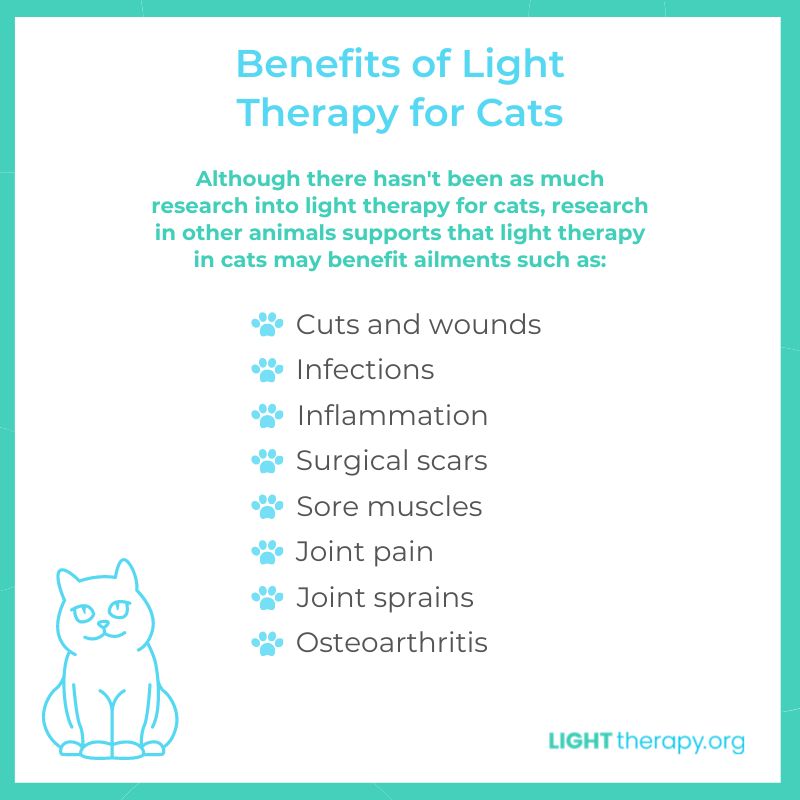Everything You Need to Know About Light Therapy for Pets
Light therapy seems to have a million different applications for humans: wound healing, sleep improvement, mood boosting… and the list gets longer all the time.
But what about our furry friends? Is there promise in light therapy for pets as well as for people?
How Developed Is the Pet Light Therapy Industry?
Origins: Light Therapy for Humans
Light therapy for humans has been used at least since the mid-1990s, when NASA noticed better wound healing in astronauts who were exposed to red light from light-emitting diodes (LEDs) on their spacecraft. Since that time, light therapy has treated conditions like acne, psoriasis, eczema, joint pain, and even depression.
Light therapy harnesses blue, red, green, or full-spectrum light wavelengths and shines them directly on the body to produce a variety of beneficial effects. Historically, most light therapy for humans involved the use of lasers or LEDs in a clinical setting or medical spa. More recently, advancements in technology have made LED light therapy available for home use via portable, handheld devices as well.
Development: Light Therapy for Pets
Once people discovered the many benefits of light therapy, they began to wonder if these same benefits could extend to their pets. And so far, research indicates that light therapy for pets is safe and potentially effective for a variety of animal health conditions.
Not as much clinical research exists on light therapy for pets as on light therapy for humans, largely because research in this area is relatively new. More studies are published every year, and several have shown extremely promising results.
Because research moves slowly and light therapy is generally safe, many veterinarians have been using light therapy for pets in their practices for a decade or more. Their anecdotal reports suggest considerable benefit for animals.
Light Therapy for Dogs
They say dog is man’s best friend. From cheering us up when we’re down to protecting us when we’re home alone, dogs continually live up to that saying!
In return, we love our dogs and hate it when they’re sick or in pain. Here are just a few ailments light therapy can help in our canine friends:
- Inflammation
- Pain
- Wounds
- Infections
- Skin conditions, like dandruff
- Surgical scars
- Chronic kidney disease
- Back pain
- Joint pain
- Hip dysplasia
- Osteoarthritis
- Sprains and strains
Here, we’ve included an overview of some of the more prominent and promising clinical studies on light therapy for dogs.
A small 2015 study examined light therapy for the treatment of hair loss in seven dogs. All seven showed increased hair growth after treatment compared to control.
A study in 2017 assessed the use of light therapy on dogs who were undergoing bone surgery. Some of the dogs received a near-infrared (NIR) light treatment before the surgery, while others received a placebo. Eight weeks after their surgeries, more dogs from the light therapy group had healed than from the control group. Researchers made a special note that this held true even though the light therapy recipients were older.
Arthritis is one of the most well-researched applications for light therapy in dogs. A 2020 study, for example, examined 17 dogs with osteoarthritis. Researchers administered low-level laser therapy (LLLT) to each dog once a week for six weeks and assessed their pain symptoms before, during, and after the study. After just one session, the dogs’ pain levels dropped significantly. After two sessions, clinicians were even able to reduce 13 of the 17 dogs’ pain medications.
None of these studies showed any side effects from light therapy. If you’re interested in using light therapy for your dog at home, see our post on how to use red light therapy for dogs.
Light Therapy for Cats
Dogs aren’t the only pets we allow into our homes, beds, and hearts. Although there hasn’t been as much research into light therapy for cats, research in other animals supports that light therapy in cats may benefit ailments such as:
- Cuts and wounds
- Infections
- Inflammation
- Surgical scars
- Sore muscles
- Joint pain
- Joint sprains
- Osteoarthritis
A few smaller studies have shown promising results in the use of photodynamic red light therapy with a light-sensitizing drug to treat feline squamous cell carcinomas.
Even though the study of light therapy in cats is lagging behind, the research that does exist is encouraging. It’s also reasonable to assume that the benefits observed in studies on dogs would largely apply to cats as well, though further studies will likely investigate this.

Equine Light Therapy
A pet doesn’t have to live inside your house to be beloved! Many horse-lovers and large animal veterinarians have tried light therapy on horses. Most of the studies are related to skin wound healing, and results are mixed, as equine skin wounds can be very slow to heal.
One small study examined the treatment of skin wounds on horses with red and NIR light therapy. Researchers compared two wounds on the same horse: one treated with light therapy and one untreated. After comparing the size and swelling of the wounds, researchers noted that the wound treated with light therapy actually increased in size, although they couldn’t be sure this was due to the treatment.
Light therapy has shown more promise in the treatment of equine periocular squamous cell carcinoma. It has also been used in managing and promoting equine fertility for many years.
Light Therapy for Other Pets
It’s true that the studies on light therapy for pets have been mostly limited to dogs, cats, and horses, but light therapy for pets is an emerging science that’s just finding its feet. We expect to see new studies benefiting other household pets in the future.